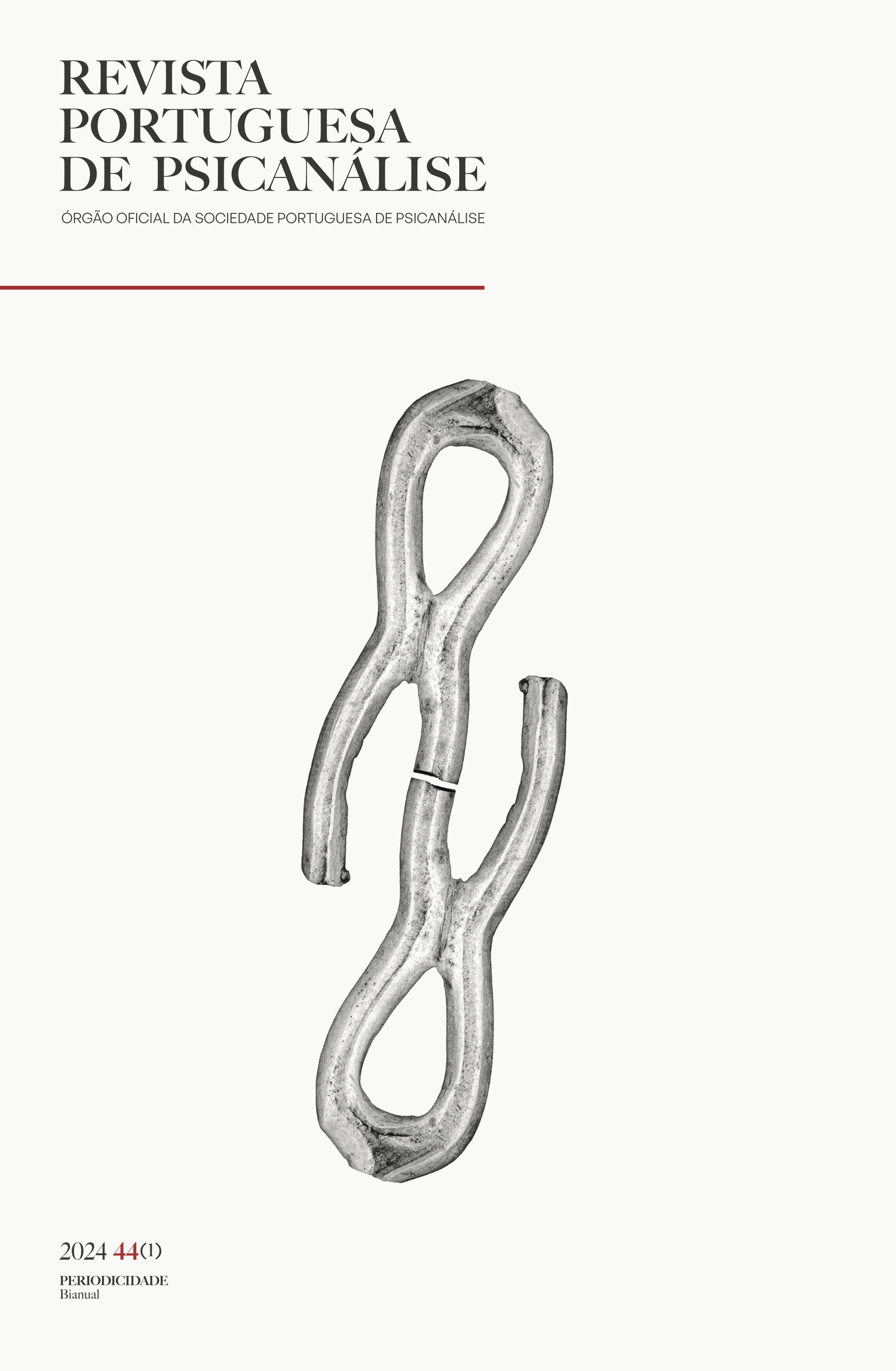Abordagem Psicanalítica Institucional em Territórios de Adições e Perturbação Borderline da Personalidade

Abstract
Institutional Psychoanalytic Approach in Addiction and Borderline Personality Disorder Territories
The aim of this work is to illustrate, based on the presentation of a clinical case of a young woman with addiction problems and borderline personality disorder followed in psychodynamic psychotherapy in an institutional outpatient context, the relevance of psychoanalytic thinking and understanding of transference and countertransference dynamic in accessing the mental functioning and adherence to treatment of these difficult to reach patients (Joseph, 1975).
Based on clinical material and the conceptual approach of Otto Kernberg’s theory of object relation theory (1976), Thomas Ogden’s autistic-contiguous position (1989) and Esther Bick’s phenomena of “second skin formation” (1968), it is proposed to support the understanding of sensory manifestations that can appear in these patients and be acted on the intersubjective stage of the therapeutic relationship, as forms of primitive and unconscious communication that aim to recover sensations of existence, restoring the limits of the self and emotional connection to the other, associated with the precarious identity of the limits of the self and anxieties of dissolution linked to experiences of original helplessness. The clinical and technical implications of this approach for therapeutic intervention in these patients are analyzed.
Keywords
addictions, borderline pathology, original helplessness, austistic-contiguous anxiety, second skin phenomena
Author Biography
Sandra Pires
Psicóloga Clínica no Instituto para os Comportamentos Aditivos e as Dependências, Mestre em Psicologia clínica e psicopatologia. Psicanalista, membro da Sociedade Portuguesa de Psicanálise (SPP), da Federação Europeia de Psicanálise (FEP) e da Associação Internacional de Psicanálise (IPA).
References
- Alvarez, A. (2020). Companhia viva. Psicoterapia psicanalítica com crianças autistas, borderline, desamparadas e que sofreram abuso. Blusher. (Original publicado em 1992.)
- Anzieu, D. (1995). Le moi-peau. Dunod. (Original publicado em 1989.)
- Bick, E. (1968). The experience of the skin in early object-relations. The International Journal of Psychoanalysis, 49, 484–486.
- Bion, W. R. (1962). Learning from experience. Heinemann.
- Civitarese, G. (2010). The intimate room: theory and technique of the analytic field. Routledge.
- Hagman, G. (1995). A psychoanalyst in methadonia. Journal of Substance Abuse Treatment, 12(3), 167–179.
- Joseph, B. (1975). O paciente de difícil acesso. Em E. B. Spillius (Ed.), Melanie Klein hoje. Desenvolvimentos da teoria e da técnica (vol. 2, pp. 62–75). Imago. Kernberg, O. (1975). Borderline conditions and pathological narcissism. Jason Aronson.
- Kernberg, O. (1976). Object relations theory and clinical psychoanalysis. Jason Aronson.
- Kernberg, O. et al. (1989). Psychodynamic psychotherapy of borderline patients. Basic Books.
- Kernberg, O. et al. (2004). Aggressivity, narcissism and self-destructiveness in the psychotherapeutic relationship. New developments in the psychopathology and psychotherapy of severe personality disorders. Yale University Press.
- Khantzian, E. (2015). Psychodynamic psychotherapy for the treatment of substance use disorders. Em Nady el-Guebaly et al. (Eds.), Textbook of Addiction Treatment: International Perspectives. Doi: 10.1007/ 978-88-470-5322-9_38
- Klein, M. (1991). Inveja e Gratidão e outros trabalhos (1946-1963). Imago. (Original publicado em 1957.)
- Landheim, A. S., Bakken, K. & Vaglum, P. (2003). Gender Differences in the Prevalence of Symptom Disorders and Personality Disorders among Poly-Substance Abusers and Pure Alcoholics: Substance Abusers Treated in Two Counties in Norway. European Addiction Research, 9(1), 8–17. Doi: https://doi.org/10.1159/000067732
- Langås, A. M., Malt, U. F. & Opjordsmoen, S. (2012). In-depth study of personality disorders in first-admission patients with substance use disorders. BMC Psychiatry, 12(180). Doi: https://doi.org/10.1186/1471-244X-12-180
- Magalhães, L. (2008). Perspectivas psicodinâmicas no tratamento do toxicodependente. Revista Toxicodependências, 14(3), 67–81.
- Ogden, T.H. (1989). The primitive edge of experience. Jason Aronson.
- Parmar, A. & Kaloiya, G. (2018). Comorbidity of Personality Disorder among Substance Use Disorder Patients: A Narrative Review. Indian Journal Psychological Medicine, 40(6), 517–527. Doi: https://doi.org/10.4103/IJPSYM.IJPSYM_164_18
- Pires, S. (2005) Maus tratos infantis: Fator de risco na génese da toxicodependência. Revista Toxicodependências, 11(1), 65–78.
- Pires, S. & Duran, D. (2010). Maus tratos infantis e percursos na toxicodependência. Revista Toxicodependências, 16(3), 3–16.
- Shearer, S.L. (1994). Phenomenology of self-injury among inpatient women with borderline personality disorder. Journal of Nervous and Mental Diseases, 182(9), 524–526.
- Sletvold , J. (2013): The ego and the id revisited: Freud and Damásio on the body ego/self. The International Journal of Psychoanalysis, 94(5),1019-1032.
- Verheul, R. (2001). Co-morbidity of PD in individuals with substance use disorders. Eur Psychiatr.,16, 274–82.
- Winnicott, D. (1971). Playing and Reality. Tavistok.